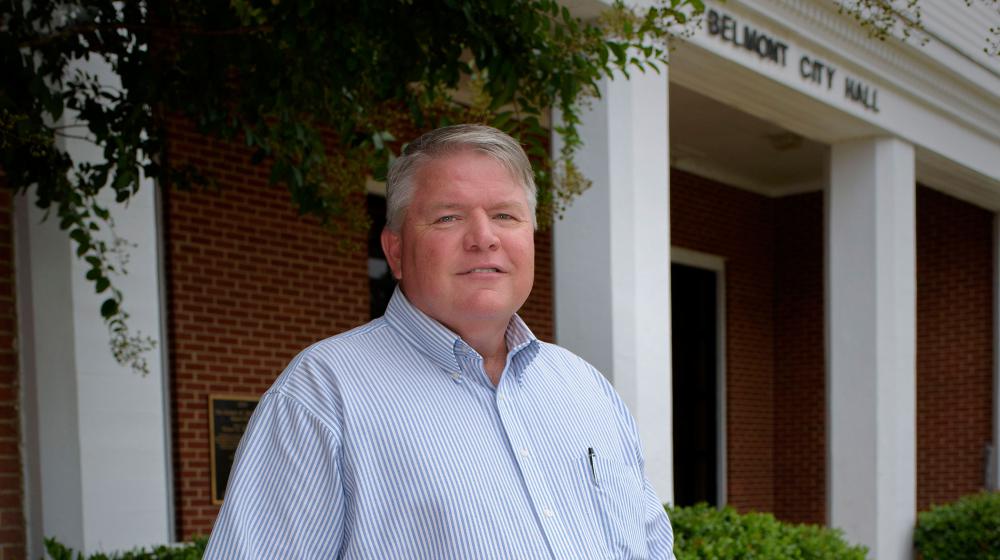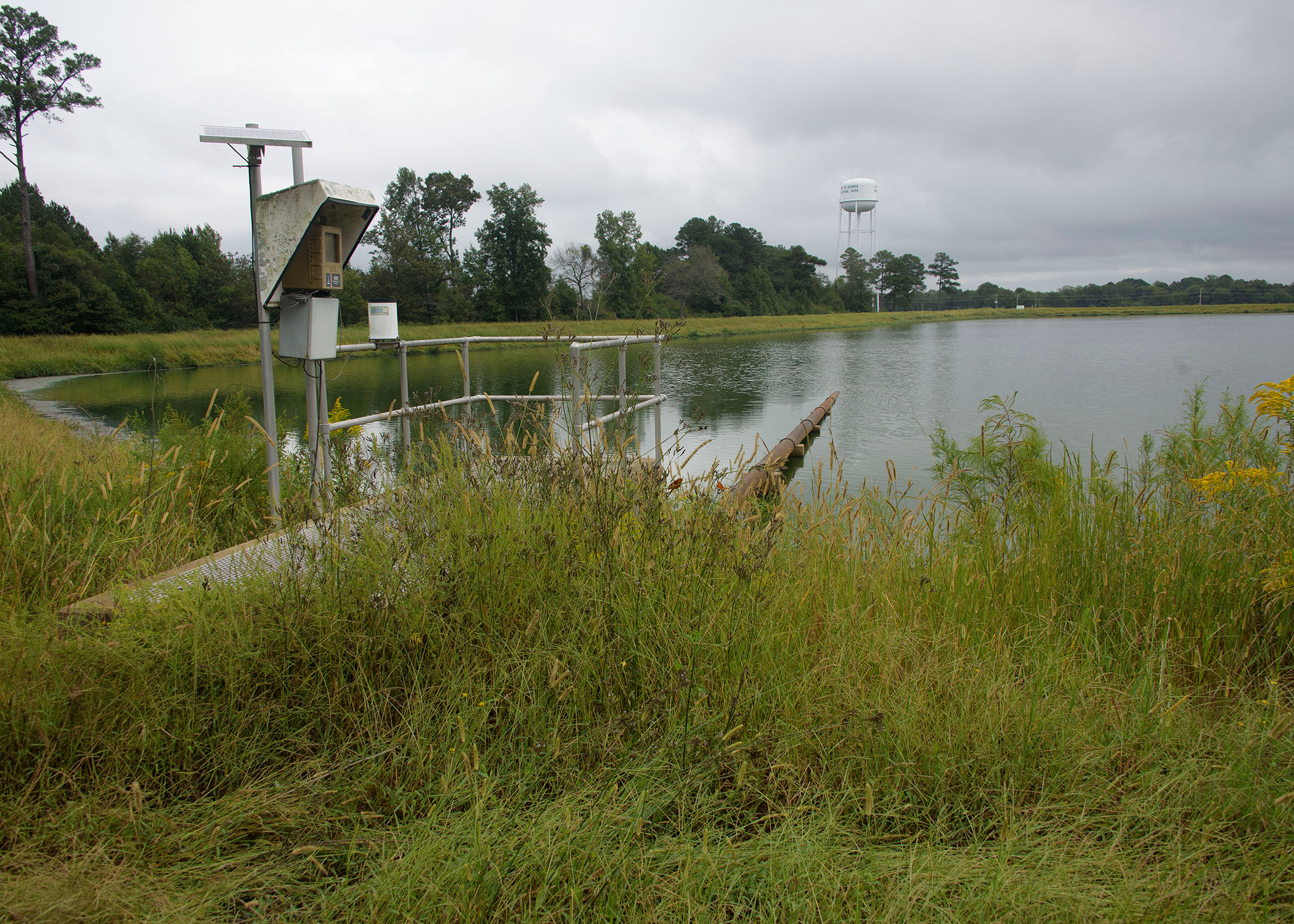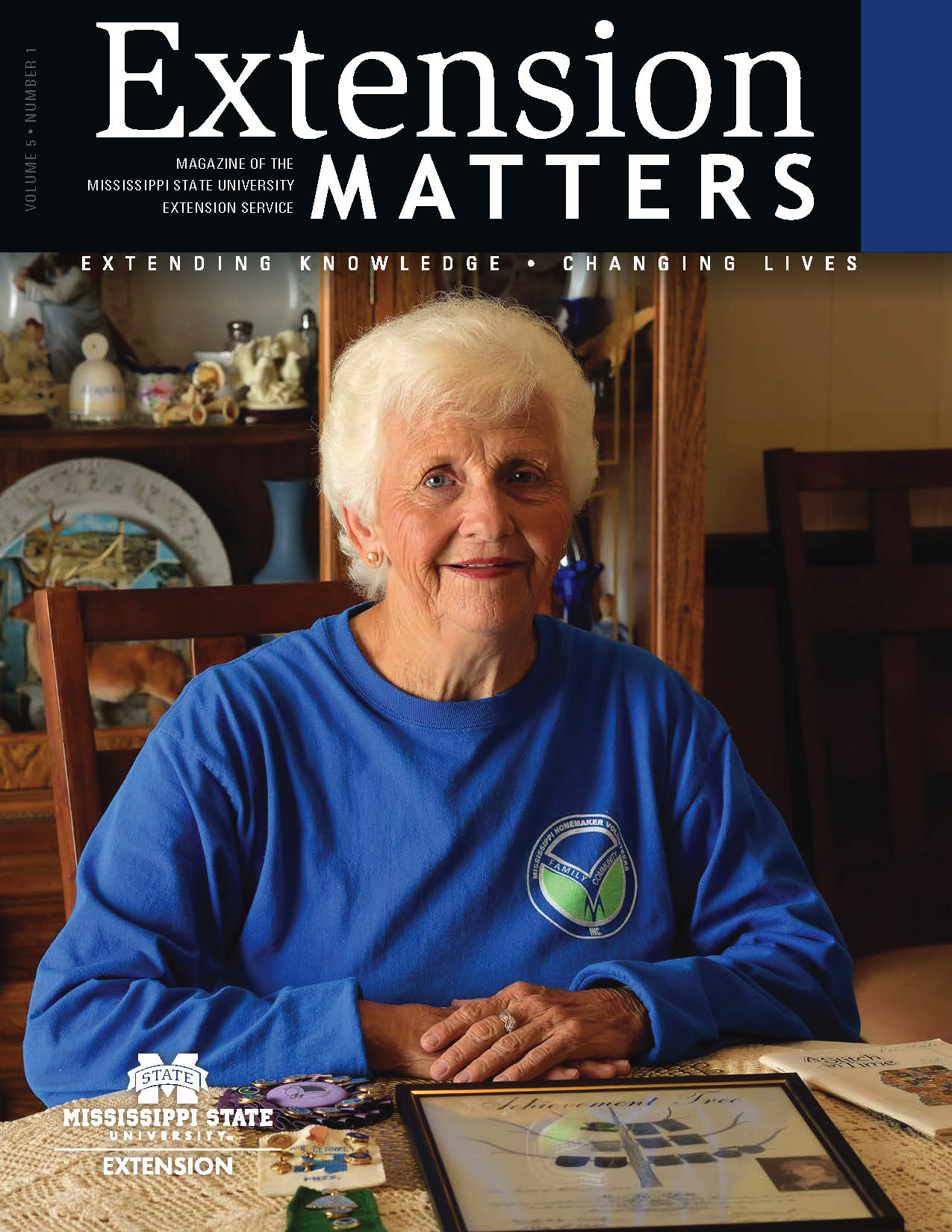Free Advice

Buddy Wiltshire reached out to the Mississippi State University Extension Center for Government and Community Development.
Extension helps community improve wastewater system
Story by Nathan Gregory • Photos by Kevin Hudson
For the last few years, Gary Gasaway and Buddy Wiltshire have been nervous during the winter months.
That was the time of year when, depending on how cold it was, the ammonia levels discharged out of their hometown’s wastewater system would sometimes reach more than 20 parts per million.
The Mississippi Department of Environmental Quality (MDEQ) requires that amount to be below 3 parts per million. So, as Belmont’s wastewater plant operator and mayor, respectively, Gasaway and Wiltshire had cause for concern.
“Most months, we were good. It was always just this time of year, but you can’t be out of compliance even that much,” Wiltshire says. “We were going to have to do something to correct it or pay fines.”

wastewater urged the city of belmont to improve its treatment plant.
This included consulting with an engineering firm, which recommended a new treatment plant for the Tishomingo County town. Construction of the new plant would have cost Belmont about $3 million, causing rates to double for more than 900 customers. But the town’s officials dodged that burden after a chance meeting.
Wiltshire approached Dr. Jason Barrett, assistant Extension professor in the Mississippi State University Extension Center for Government and Community Development, after a municipal conference presentation on the topic. After visiting the town’s treatment facilities, Barrett suggested alternative, lower-cost methods to decrease the amount of ammonia deposited into treated water.
“Conventional lagoons like the ones in Belmont are holding ponds large enough to accept a 30- to 45-day flow of influent. Over that time period, the good bacteria eats the waste and the solids settle out,” Barrett explains. “I like to look at natural additions to wastewater treatment first, before we start looking at adding chemical feeds or trying to change the entire plant to a mechanical plant. One of the first things you can do is add aeration.”
The system, which has an 800,000-gallon treatment capacity, uses a pumping station that pumps water from a 15-acre raw sewage lagoon to a 5-acre pond. Purchasing an aerator would change the classification of the plant, meaning it would have more MDEQ guidelines to follow. To prevent that while generating more oxygen in the water, Gasaway worked with what he had.
“We had an issue with flow when we built the second lagoon. For that, we used the pumping station to add oxygen into the water in the second lagoon where it entered and created room to hold water longer for algae to absorb the ammonia,” he says. “We’ve been able to keep ammonia levels in compliance since we’ve been doing this and following recommendations from Extension and MDEQ.”
Gasaway says he and town officials respect and trust Barrett’s expertise and were glad to avoid passing added costs to Belmont residents.
“When we answer to our ratepayers, we can say we explored every avenue possible,” he says. “That’s worth more than some of the solutions sometimes.” Barrett noted that, if Belmont’s population grows in the next 10 years, officials may have to consider upgrades, but keeping rates affordable for the people there now is top priority.
“Our goal is to help people in an objective, factual manner. I’m always going to try the low-cost options before going to something else. For now, the permit is being met by the current treatment facility with these adjustments.”
Wiltshire said Barrett’s experience in analyzing wastewater systems was critical in continuing to deliver those services to Belmont residents at an affordable cost.
“The wealth of knowledge Jason has from working with other systems about the options available to us helped us develop a solution and do the right thing for our town,” Wiltshire says.


